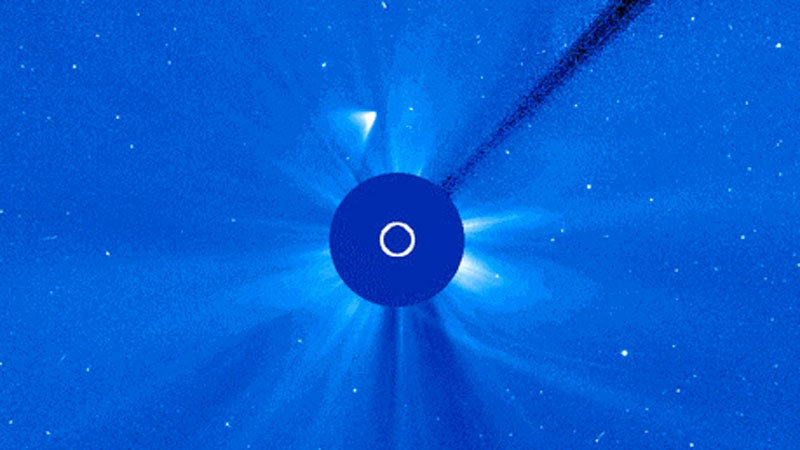NASA released a statement saying it will continue to investigate the fate of Comet ISON after the comet’s intimate encounter with the sun last Thursday appeared to result in distintegration. NASA adds that the comet is likely now “.”
ISON, the 4.5-billion-year-old comet that got its start as a Sungrazer when a passing star pushed it from the embrace of the in 3 million B.C. was discovered just a year ago. Its journey culminated cathartically at its perihelion point, when the comet drew closest to the sun before its parabolic orbit would have slung it back into deep space and past Earth, for what star-gazers hoped would provide a once-in-a-lifetime holiday spectacle.
Instead, solar observatories reported several hours passing with no sign of ISON emerging from the other side of the sun, leading some to believe it had succumbed entirely to solar heat.
But then, at last, something showed: that observers speculate will soon begin to fade from view, rapidly.
Our best chance to know for sure will be later this month, if the Hubble Space Telescope makes observations.
But, in all likelihood, Comet ISON is survived by “approximately several trillion siblings,” according to a written by Karl Battams of the U.S. Navy’s Sungrazer Comets citizen science project and the NASA-sponsored Comet ISON Observing Campaign.


